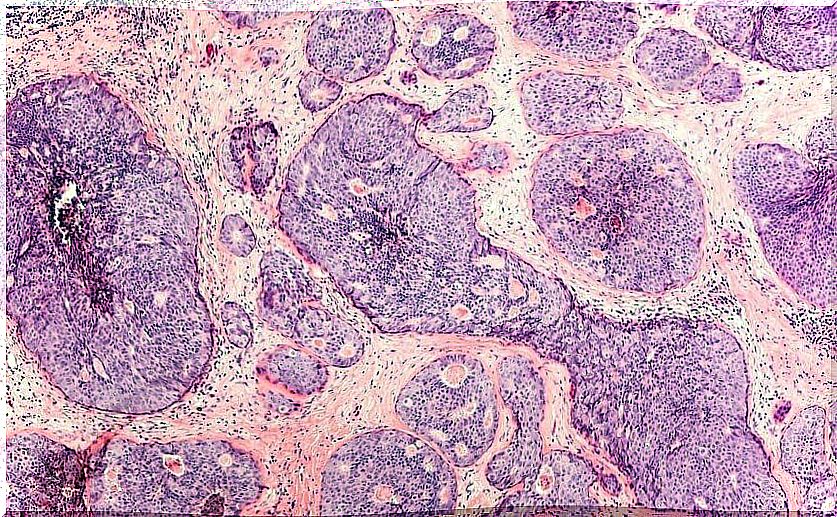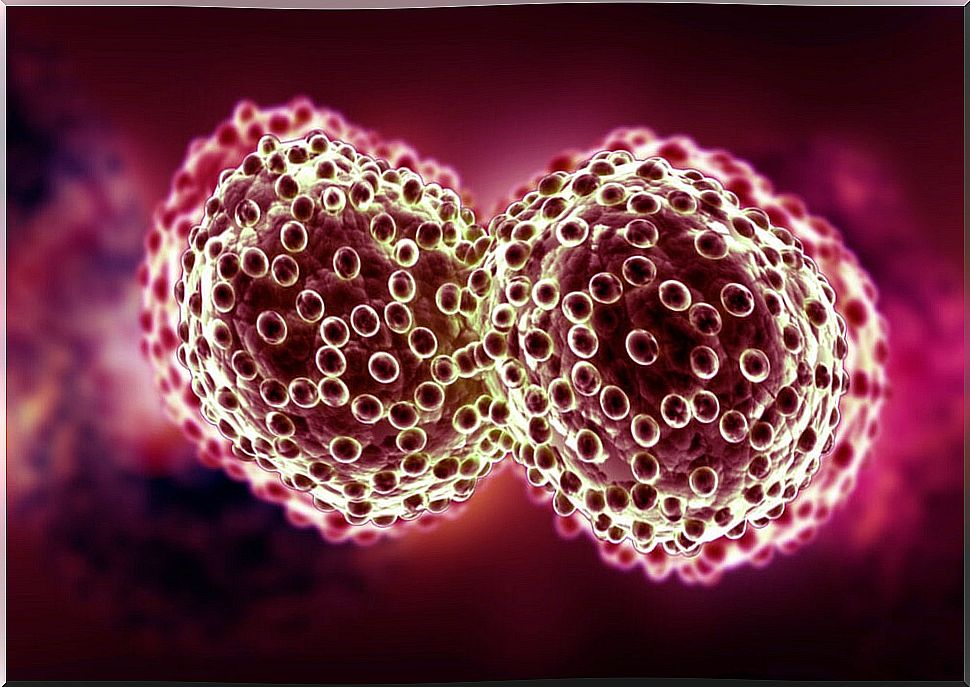Triple Negative Breast Cancer
Triple negative breast cancer is the most aggressive and difficult type of breast cancer to treat. It occurs in 20% of cases.
There are three fundamental types of breast cancer, classified according to the presence or absence of three receptors on cancer cells. So first of all, we will make it clear what a cellular receptor is.
Importance of cell receptors

The cells of the body must communicate with their environment. They need to be able to receive signals that inform them of the conditions of the environment in which they are in order to act accordingly.
For this communication to be possible, 3 elements are necessary:
- A signal molecule, which is in the environment of the cell and that, when it detects it, causes a response.
- A receptor, that is, a protein present in the cell membrane capable of detecting the signal molecule and transferring the information into the cell.
- Certain factors and molecules inside the cell with the capacity to respond to the signal that has been transmitted from the outside of the cell.
Thus, receptors are essential for regulating many cellular processes. Specifically, in the case of cell growth, there are receptors that detect growth factors, such as hormones (signal molecules) and transmit this information to the cell so that it grows and divides.
The problem with cancers, and breast cancer among them, is that cancer cells have no control over this mechanism. Its receptors are activated when they should not and cells proliferate uncontrollably.
But, this aspect that gives cancer cells a high capacity for division, is also an excellent target to control cancer, using drugs against these receptors.
Types of breast cancer according to their receptors
Hormone receptors
Both in normal cells and in most cancer cells we find the so-called hormonal receptors. These receptors, as their name suggests, detect hormones.
These hormones are classified into two large groups: estrogens and progesterone. Existing for them estrogen and progesterone receptors, respectively.
Hormone receptor-positive breast cancers can be treated by targeting precisely these receptors. Thus, hormone therapy can slow down or even completely stop the proliferation of cancer cells.

HER2 receptors
HER2 receptors are not fully characterized, so it is not known which signal molecule activates them. However, the presence of these receptors is known to be associated with cell division.
In HER2-positive breast cancers, cancer cells have a high number of these receptors, so these cells divide uncontrollably.
But again, this offers a clear target for treating such cancers. By attacking its HER2 receptors through hormonal therapy, we could slow the progress of cancer.
Triple negative breast cancer
The peculiarity of this type of aggressive breast cancer is that it is negative for both estrogen and progesterone hormone receptors and HER2 receptors.
That is, the proliferation of this type of cancer cells is not linked to hormonal receptors, something that occurs in around 10-20% of breast cancer cases.
This implies, in the face of a treatment, the absence of targets or “weak points” to attack said cancer. This is the reason for its poor prognosis, compared to other types of breast cancer.
In addition, triple negative breast cancer is usually more aggressive, as it is more likely to spread outside the breasts, generating metastases. Furthermore, this type of cancer is usually recurrent, that is, it can come back even after treatment.
However, all is not lost when it comes to treating triple negative breast cancer. There are still other very useful types of treatments:
- Breast lumpectomy : Removal of the breast tumor and examination of nearby lymph nodes to make sure the cancer has not spread.
- Masectomy : removal of the breast and examination, also, of nearby lymph nodes.
- Radiation : Radiation therapy aims to destroy all cancer cells that are left after breast lumpectomy. It is done with high energy radiation.
- Chemotherapy : The goal of chemotherapy is to kill small cancer cells that may have spread to another part of the body. Chemotherapy reduces the chance that the cancer will come back.
Finally, although the most common treatments for other types of breast cancer do not have an effect in the case of triple negative breast cancer, this does not imply the absence of other types of targets to attack in these cases.
In fact, more and more alternative treatments are emerging to treat triple negative breast cancer and research in this field continues to advance in order to discover new therapeutic strategies.










